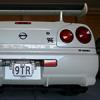R34 Pfc Doesnt Run All S1
Announcements
-
Similar Content
-
Latest Posts
-
ouch! how is the car now?I had sold my gtr but have been looking into some on trademe and a 260RS but I wouldnt be keen on any repairs needed on them
-
Just back on what was raised about jacking off the the tow/tie down point on the front of cars. I've used it plenty. I've also watched it on a car where you could see it move the front end of the car. It was like the front end/whole car being tweaked and twisted a bit. I will say, I struggle to find good jacking points on MOST cars. The ones that have good points, I then normally struggle to find a jack tall enough to make the car change height! One of my go to points for either the jack, or the axel stands though, is either a suspension pickup point, OR a subframe to chassis major bolting point. I actually think its the subframe on my R33 that has a bit of a bend in it, from being jacked in the middle too. However, it could have been one of my many other cars I've had over the years! Or it could also be the from me jacking it up, and the fact the top of the front radiator support isn't there, so it can allow the front of the car to move and bend etc.








Recommended Posts
Create an account or sign in to comment
You need to be a member in order to leave a comment
Create an account
Sign up for a new account in our community. It's easy!
Register a new accountSign in
Already have an account? Sign in here.
Sign In Now